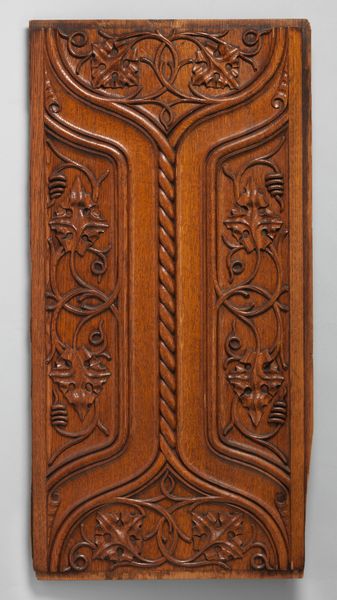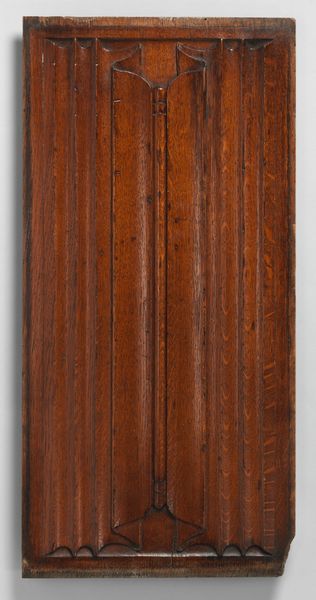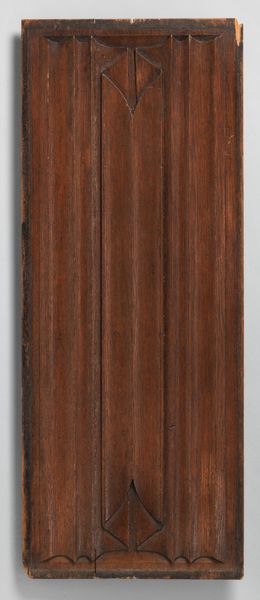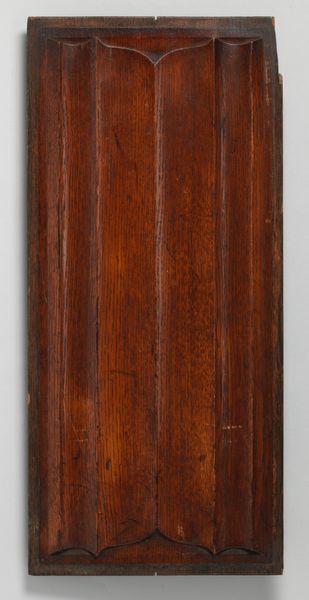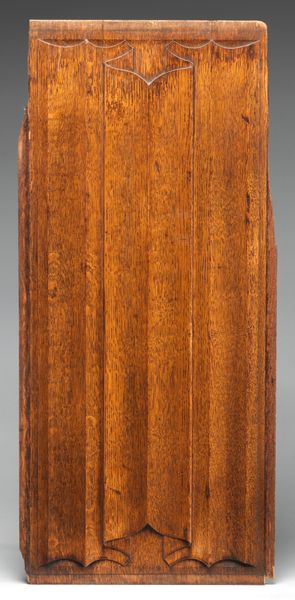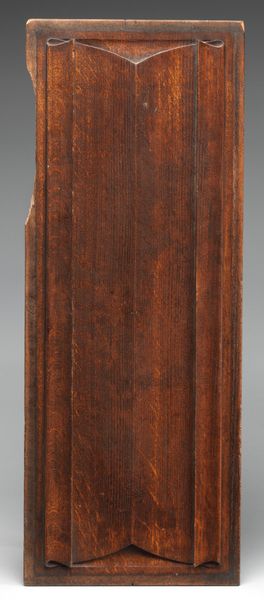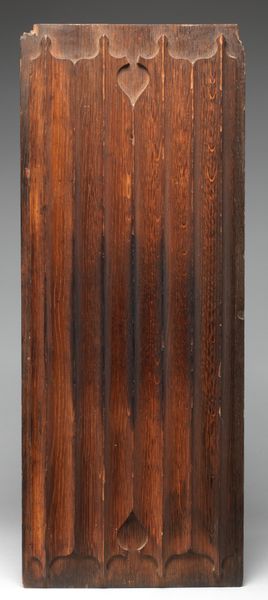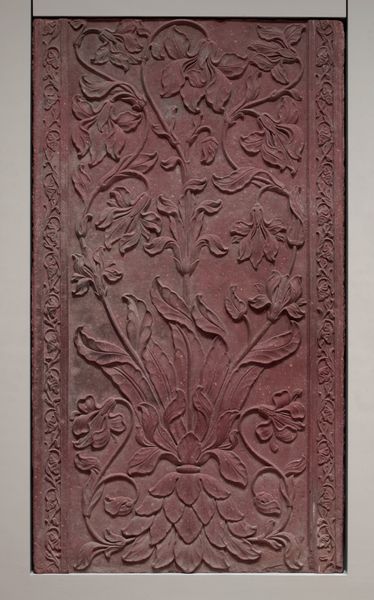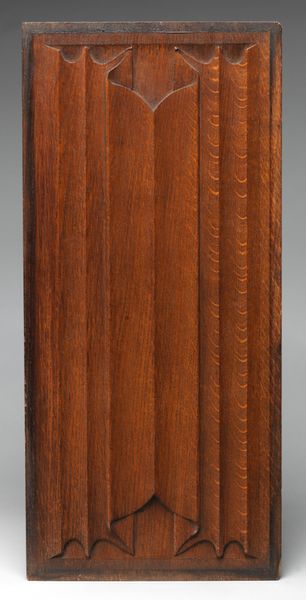
Decorative paneling from the Palace of Westminster 1840s - 1850s
0:00
0:00
Dimensions: Overall (confirmed): 29 3/8 × 10 1/8 × 11/16 in. (74.6 × 25.7 × 1.8 cm)
Copyright: Public Domain
Curator: This is a section of decorative paneling designed by Augustus Welby Northmore Pugin, dating from the 1840s to 1850s. It originates from the Palace of Westminster, and we are fortunate to have it here at the Metropolitan Museum of Art. Editor: My first impression is one of controlled chaos, if that makes sense. There’s a rigidity in the symmetry and the paneling itself, but then the carvings… they almost feel alive, twisting and turning. Curator: Precisely. Pugin was a central figure in the Gothic Revival and the Arts and Crafts movement. The Palace of Westminster, of course, is a key monument of that revival. His designs sought to embody moral and spiritual values through architectural form. What looks decorative here served a broader ideological function. Editor: So, beyond pure ornamentation, he aimed to project certain beliefs through the craftsmanship? What values were embedded, would you say? Curator: Certainly. A return to what he perceived as the honesty and integrity of medieval craftsmanship. Think about the contrast to mass-produced, industrial designs of the time. Pugin promoted handwork and saw in Gothic forms an embodiment of Christian social principles. The carving, the detailing, it all speaks to a pre-industrial ideal. Editor: And given that the Palace of Westminster is the seat of power, Pugin’s aesthetic choices weren’t neutral, right? They contributed to legitimizing that power through associations with a carefully constructed vision of the past. A sort of romanticized and heavily edited medieval history. Curator: Exactly. Think about how powerful architectural imagery is; here the form lends a specific grandeur to legislative power, and how it frames policy decisions within a symbolic past. Editor: So much visual storytelling. I am really struck by this tension between the handcrafted and the institutional authority of where it resided, a story written in wood. Curator: Indeed, it presents a complex tapestry of design, belief, and power, preserved in this single panel. Editor: Thanks to works like this we may ask poignant questions about the nature of our present and where we want to go as societies.
Comments
No comments
Be the first to comment and join the conversation on the ultimate creative platform.
